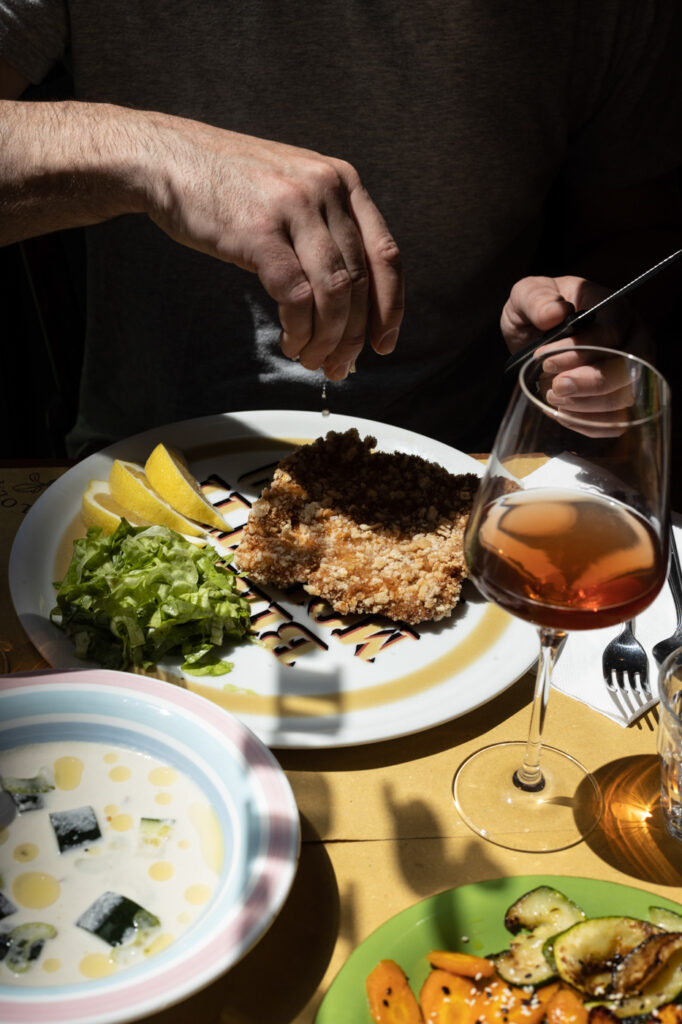
DALLA LOLA: THE MODERN TRATTORIA
Fourth-generation chef, Matilde Pettini, proves that tradition and innovation can go hand in hand, even in Tuscany.
Editor’s Note: This story is published in The Florence Issue of Life & Thyme Post, our exclusive newspaper for Life & Thyme members. Get your copy.
Florence is not short of traditional, old-school trattorias. With affordable carafes of red wine, rough-and-ready service, and a short menu—often handwritten—featuring typical local dishes that have been cooked in pretty much the same way since the Renaissance, these institutions are as much a part of the city’s fabric as the Uffizi or the Ponte Vecchio. The trattoria is more casual than a ristorante, and more substantial than an osteria. It’s a concept that is much loved and much celebrated, both among Florentines (all of whom have their own chosen trattoria from which they’ll rarely stray) and among visitors, who delight in the crudeness, the huge plates of bistecca fiorentina, and perceived authenticity of the whole experience.
The sense of history associated with the trattoria is palpable, and to say the menus can be traced all the way back to Medici times is not just a marketing ploy, but a source of immense pride. Take peposo, for example. A slow-cooked peppery beef stew with lashings of red wine, it was famously made using the residual heat of the terracotta kilns in the village of Impruneta, where approximately 10 million terracotta tiles were baked for the domed roof of the Duomo in the 13th century. Then you’ve got lampredotto, an ancient “poor man’s” meat option turned Florentine staple, in the form of gently simmered tripe in tomato sauce, sandwiched between two slices of saltless Florentine bread. Fast forward to the last few decades, and the trattoria’s history becomes more local, more personal, and a steady focal point in Italy’s changing social landscape.

The model runs like clockwork, and the trattoria is not to be knocked. Yet, how glorious it is when someone within Florence’s tiny and well-saturated historic center dares to do something different. Punky young chef Matilde Pettini grew up within the Florentine restaurant industry. Her great-grandfather was the founder of Trattoria Cammillo, a stalwart on the corner of Borgo San Jacopo that has stood proud since 1945. It was eventually passed on to her grandfather Bruno, who solidified Cammillo’s place on the map during Italy’s post-war boom years. Pettini and her sister spent much of their childhood in and around the kitchen, and their parents, now in their sixties, are still at the helm.
The fact that Pettini would go into cooking in some capacity after finishing high school was never up for debate. She enrolled at the prestigious Cordon Bleu in Florence, where she now teaches others in the techniques of classical French and Italian cooking.
Perhaps being an “insider” when it comes to Florentine gastronomy, and knowing the rule book inside and out, gives Pettini the confidence to break it. You won’t find any bistecca fiorentina on the menu at Dalla Lola, the small place she opened in 2021 just a few roads away from Trattoria Camillo. Neither will you taste tagliatelle al ragù, peposo or lampredotto—at not least as you know it.
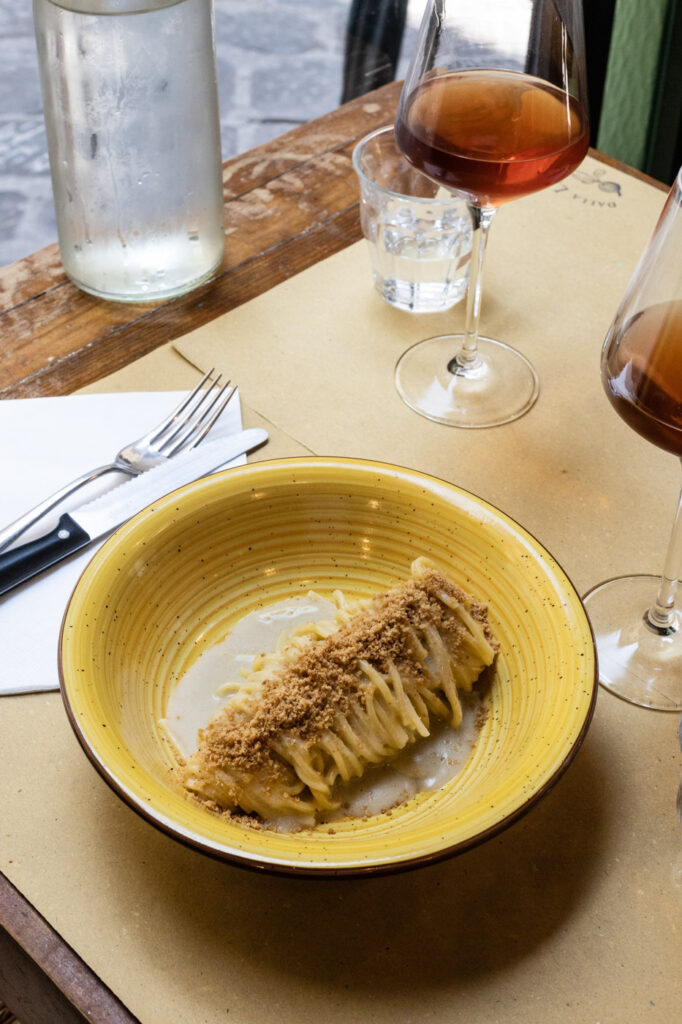
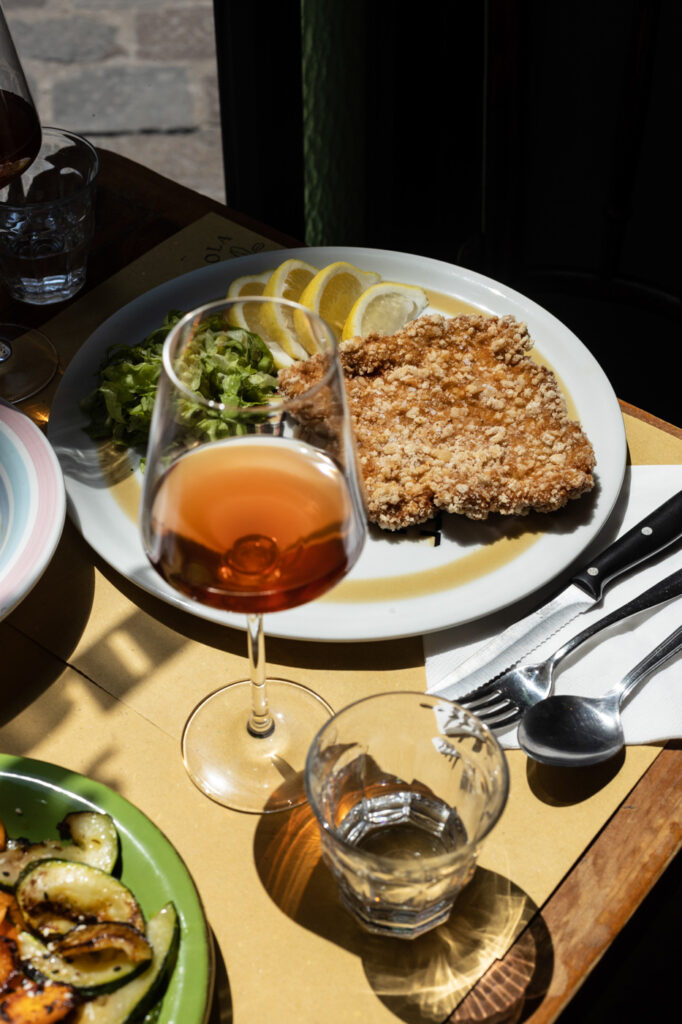
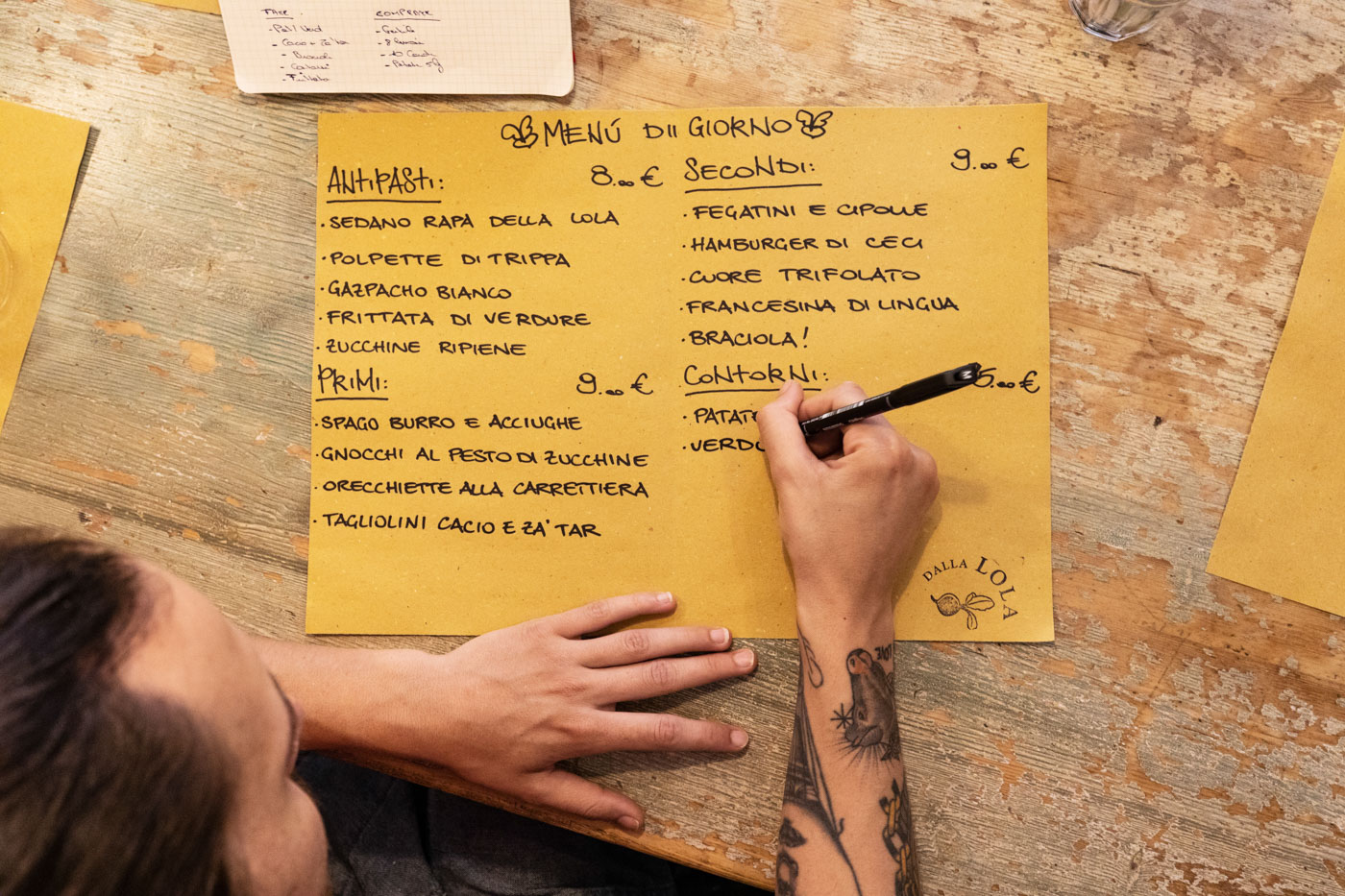
Instead, the menu has a casually playful and rebellious streak, just like its owner. Every day, at least two dishes on the menu are changed, keeping the small team of four endlessly engaged. Antipasti like fried sage leaves and chicken hearts challenge and delight diners, whetting their appetite for what is to come. Snail lasagna uses ingredient combinations that are deeply rooted in Southern Tuscany and the once-impoverished region of Maremma, pairing them with a delectable creamy sauce.
Not all the dishes are irreverent in the literal sense, however. Spaghetti con piselli is written on the menu with a little drawing of a penis, a play on the phallic double-entendre of the word for “peas.” Spago con burro acciughe is a masterpiece of simplicity, spaghetti tossed with anchovy butter and sprinkled with crunchy breadcrumbs. One mouthful of this immensely rich, buttery pasta will have you wondering why this combination—so familiar to the Tuscan palate, yet usually served on crostini—has not been on every menu forever. Pettini asks, “It’s born from the most classic Florentine snack in the world—toast, bread and anchovies—so why not make pasta with it?”
“The word ‘tradition’ often refers to the dishes that have monopolized the Florentine culinary scene for decades: bistecca fiorentina, chicken liver pâté, ribollita, and so on,” continues Pettini. “My idea of innovation tends to undermine this belief that these are the only ‘true’ Tuscan cooking. It’s based on the assumption of being able to convey to my guests what is true and heartfelt and genuine today.”
Another triumph on the menu since the very early days of Dalla Lola is tripa finta, which translates to “fake tripe.” It’s a vegetarian dish that Pettini says pokes fun at the aforementioned “inflated” classics. Although a non-meat take on an old Tuscan dish sounds very modern, the egg, flour and Parmesan tripe-lookalike actually has its roots in the working-class kitchens of the 1930s. During the height of Mussolini’s Fascist regime, meat became prohibitively expensive, and even tripe was a luxury, so the casalinghe (housewives and home cooks) devised dishes such as this.
“At Dalla Lola, we cook homemade, ancient and sometimes long-forgotten dishes, whose only failing is not being ‘catchy’ enough for tourists,” says Pettini. “Sometimes, I add ingredients that can give them an identity more in step with the times, or sometimes I go back to an ingredient that has fallen out of fashion for no good reason.”
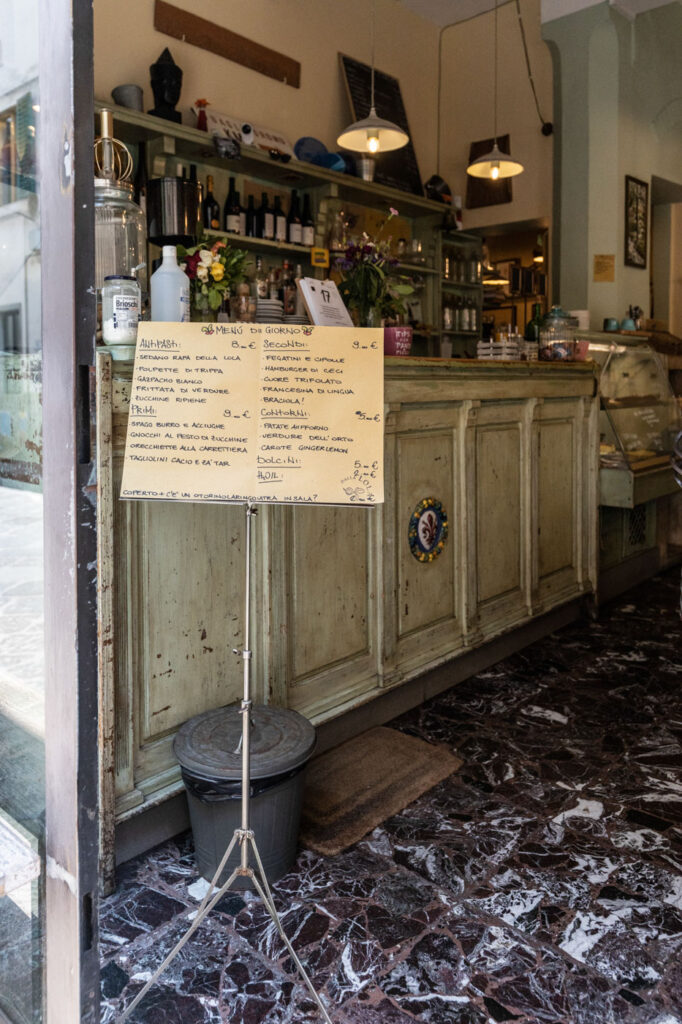
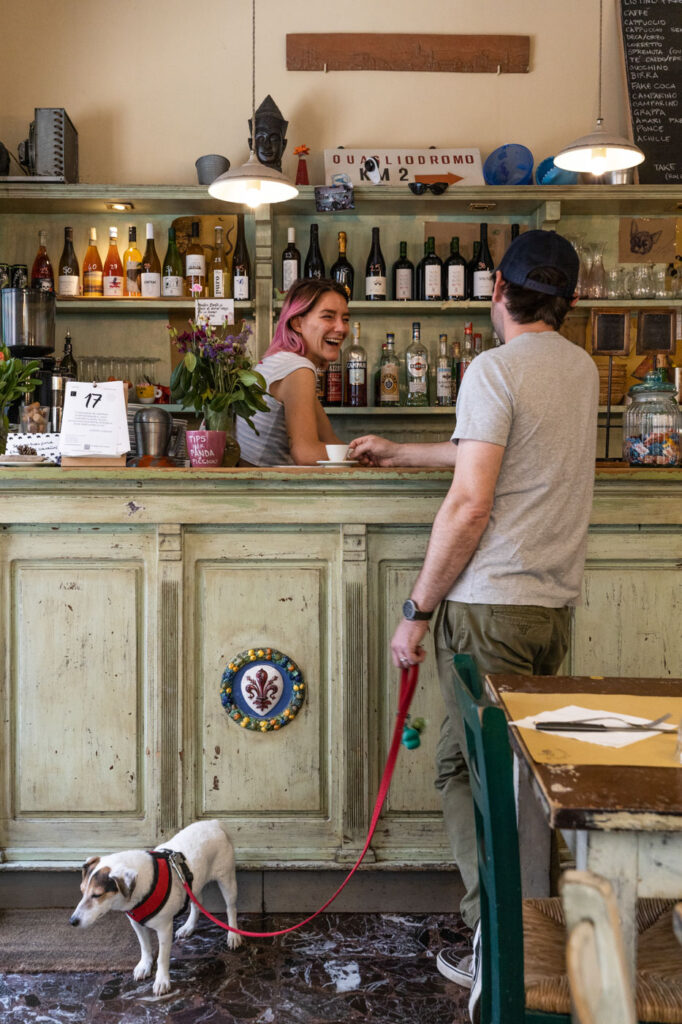
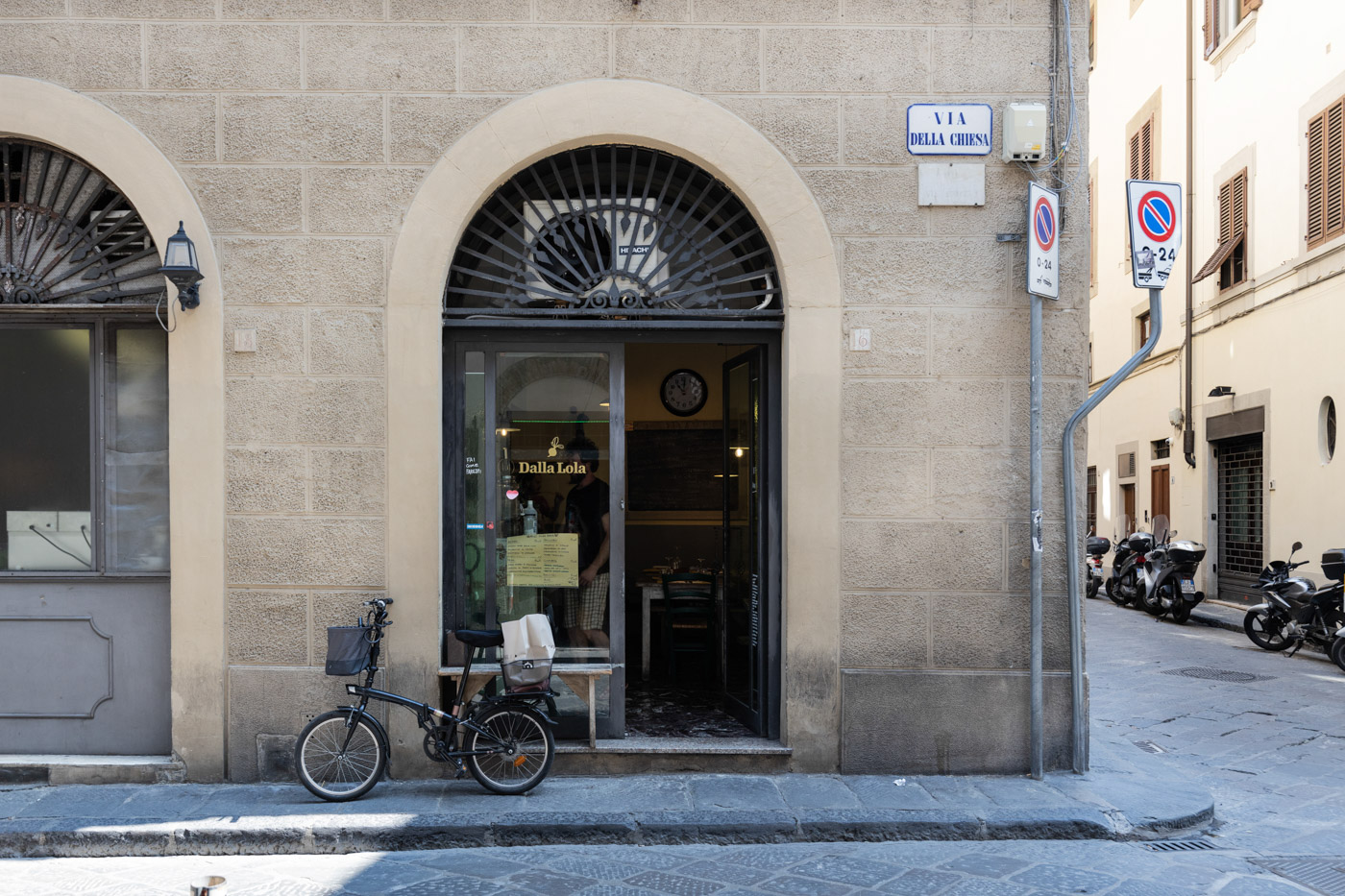
The homely décor follows the same ethos as the daily changing menu. Large wooden tables, a mint and cream kitchen dresser, and charmingly mismatched crockery all set the scene for a friendly and rustic atmosphere: the modern trattoria.
“Old forgotten recipes have fascinated me ever since my mother gave me my first copy of [Pellegrino] Artusi’s book [Science in the Kitchen and The Art of Cooking Well]. Everyone in the family has their own copy,” Pettini says. “It is with him that I officially fell in love with cooking. I’ve always thought that Artusi, in the context of his own time, restored dignity to domestic dishes, being the first to write a manual for home recipes. I often leaf through it looking for inspiration, for something old yet new to bring out.”
This balance between old and new is entirely the beauty of what Pettini is doing: taking something classic, simple, and deeply-rooted in the locale, and adding her own stamp. It’s nothing wildly groundbreaking, and yet in Florence’s tourist-focused city center, it’s hard to find.
When asked about the rest of the Florentine dining scene, and that which her family comes from, Pettini is as diplomatic as possible. “The Tuscan culinary culture is huge and presents many possibilities: considering the exceptional products, the history, and the people who helped create its foundations. Despite this, I notice that many colleagues often bow to the demands of the market, made up, as we all know, mostly of tourists. And I don’t think this gives the territory a chance to value itself.”
Besides her kitchen, Pettini’s other great passion is wine. She spends much of her off-time exploring niche vineyards around Tuscany and beyond, and has a particular penchant for anything natural or biodynamic. “I want to make the whole thing fun for my guests,” Pettini says. “I want them to taste a Tuscan Sangiovese, but perhaps a super young one that is cut with Trebbiano and served cold from the fridge. I would like them to understand that unfiltered wine is not necessarily ‘dirty.’”
Most of the bottles are hand-chosen by her and her right-hand man Paolo, who travel Italy’s smallest vineyards together in search of amazing bottles. “I strongly believe that ‘good’ wines don’t exist, but just wines that we personally like,” she concludes.
In the context of the cost-of-living crisis sweeping across Italy, Dalla Lola’s democratic business model is also worth noting. The prices are low: antipasti cost seven euros, primi eight euros, and secondi (mains) no more than nine euros, while the wines start around 20. Pettini wants everyone to be able to afford a casual lunch at Dalla Lola, which is part of its intimate and sociable appeal.
With her family backing, it would have been easy for Pettini to rest on her laurels and launch yet another classic Tuscan trattoria. Yet she’s chosen to go out on her own and forge a new path, resisting the urge for any sort of avant-garde agenda or culinary pretension. From the privileged position of trattoria royalty, she’s simply cooking as she likes to eat—without fear.






Our comments section is for members only.
Join today to gain exclusive access.